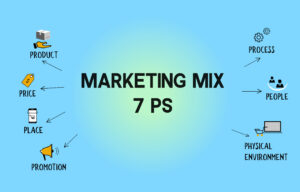Investopedia defines commercialization as “the process of bringing new products or services to market” with the understanding that the process of commercializing includes production, distribution marketing, sales, customer support, and much more.
The process typically begins when a business is scaling operations and reach, not when a product initially comes onto the market. Take this hypothetical example: A local coffee shop is known for selling a great new type of coffee beans, but them selling the coffee beans to the usual customer base is not commercialization. If they decided to set up an online store to attract a larger customer base and increase sales, this would be an example of commercialization.
Difference Between Launching and Commercializing
It’s easy to get the processes of launching and commercializing confused with one another, as it seems inherent that commercialization would begin when the product enters the market. In reality, commercialization starts far before a product is ready to debut.
The launch of a product is a small part of the broader process of commercialization. Launching takes place at the beginning of an invention’s lifespan—when it is developed and ready for its first release to market. The launch process often includes research and design, prototyping, product and brand identity, market research, and potentially some early advertising materials. Commercialization is a longer process which begins during concept phases and continues long after the product is launched. It is a constant reevaluation of how a product can move into new markets and be consumed by a larger base.
Aspects of Commercialization and the 7 Ps
 It is widely agreed upon that the most important aspect of commercialization is marketing—which encompasses a wide range of tasks. A solid marketing plan (or ‘marketing mix’ as it is commonly known) can bring a new product or service into public consciousness.
It is widely agreed upon that the most important aspect of commercialization is marketing—which encompasses a wide range of tasks. A solid marketing plan (or ‘marketing mix’ as it is commonly known) can bring a new product or service into public consciousness.
One trick for marketing plans is known as the 7 Ps. This formula is used to constantly evaluate and reevaluate business activities as a business evolves. Below are the 7 Ps, as explored on the podcast The Marketing Slice, and some questions that business owners should ask themselves at each step.
- Product: What problems or issues does your product solve for customers? Why is your product the best option for solving this problem?
- Price: How much will my customer base be willing to pay for this product? How will I market promotions, sales, or membership programs?
- Promotion: How will my marketing strategy include a wide variety of promotional activities—from online events, direct marketing, in-store marketing, etc.?
- Place: Where and how will my product be displayed?
- People: How will I ensure that customer service is top tier?
- Process: How can I ensure that the delivery and distribution process is smooth and efficient? Will my brand have a specific feature, such as being focused on sustainable packaging and distribution?
- Physical evidence: How can I elevate the physical presence of my brand—by logo branding, physical stores or offices, websites, email newsletters, etc.?
The key thing to remember about commercialization is that it is a constant process, not a one-time task. It begins when the product is still in conceptual stages and continues for the entire lifetime of a business or product.




